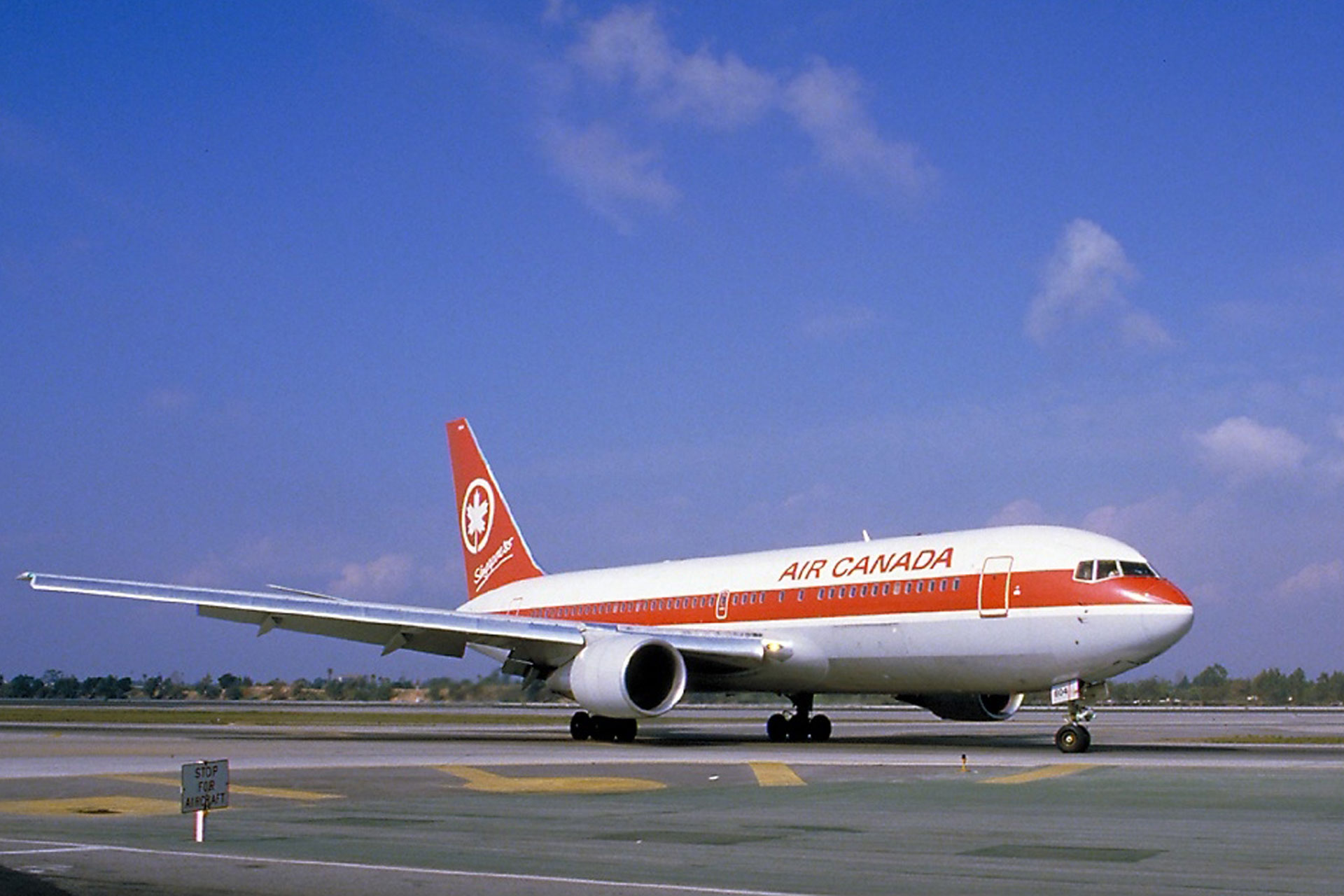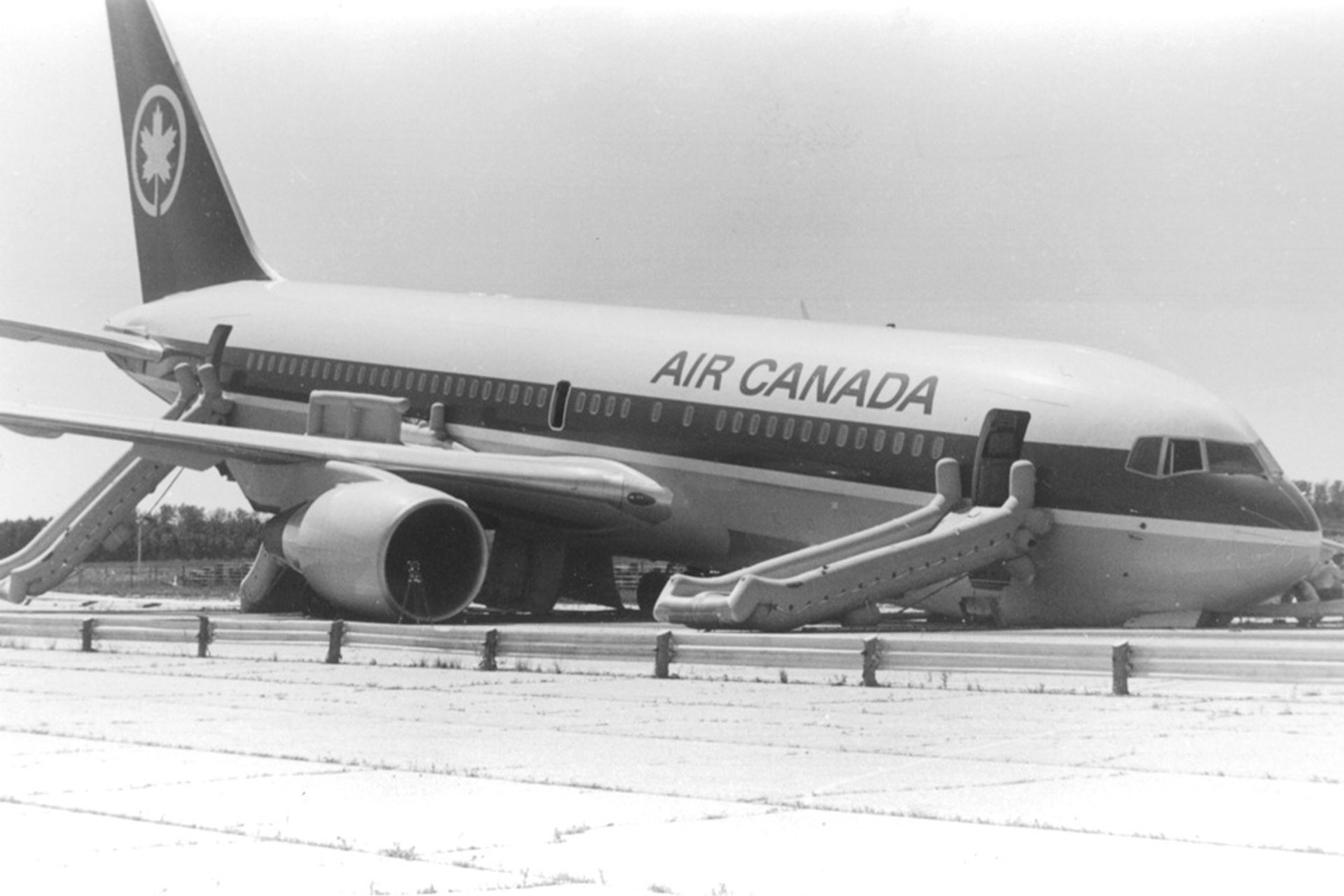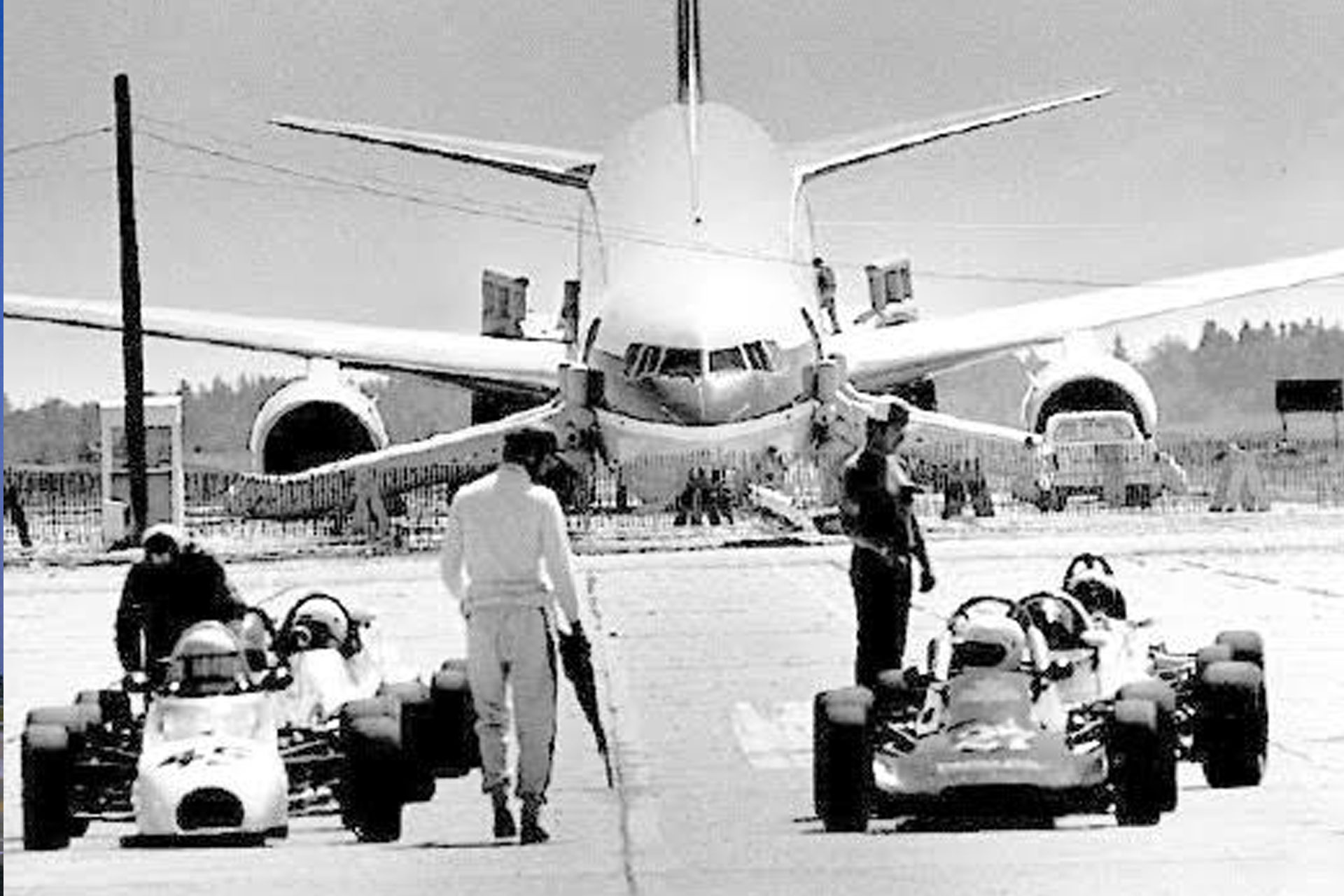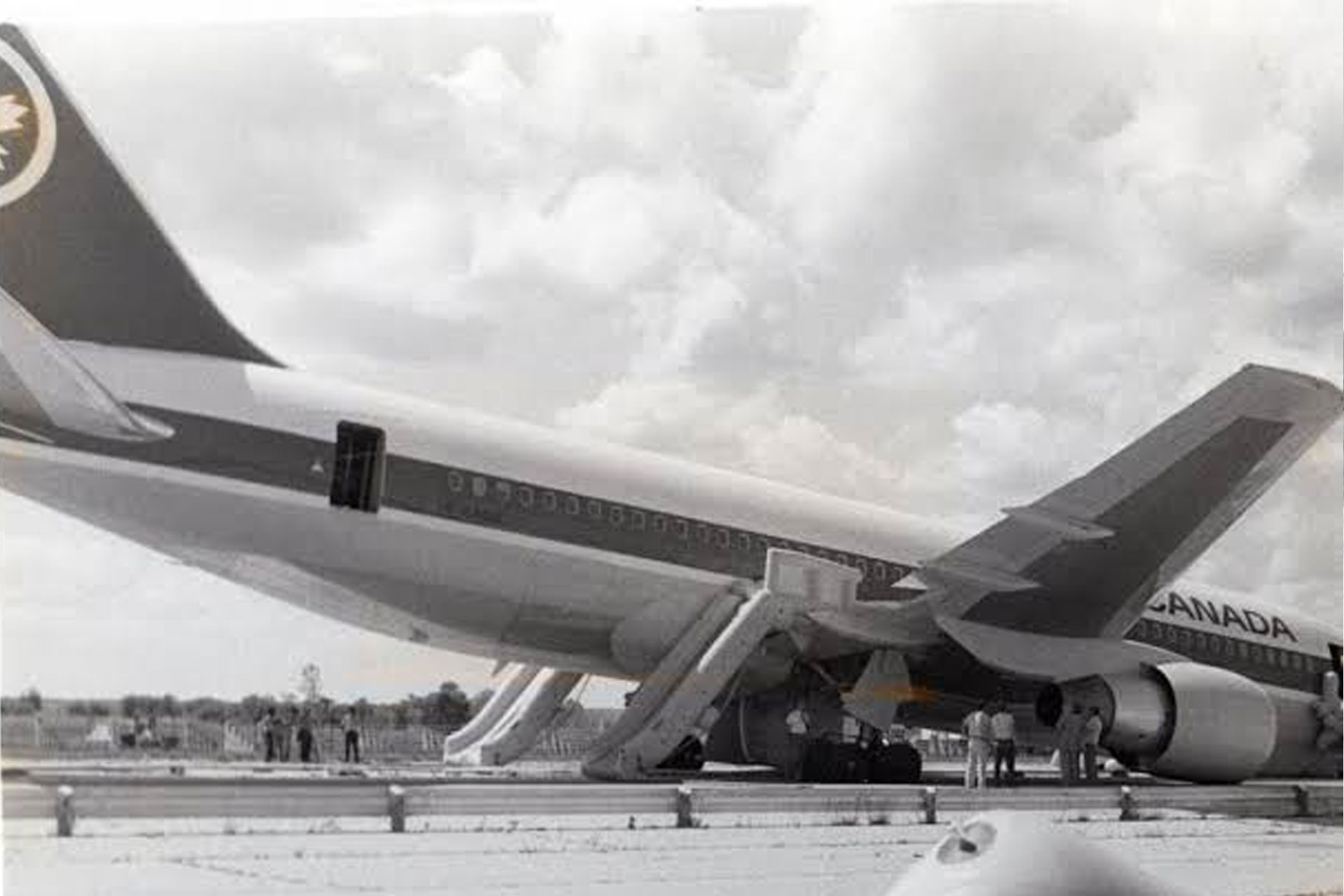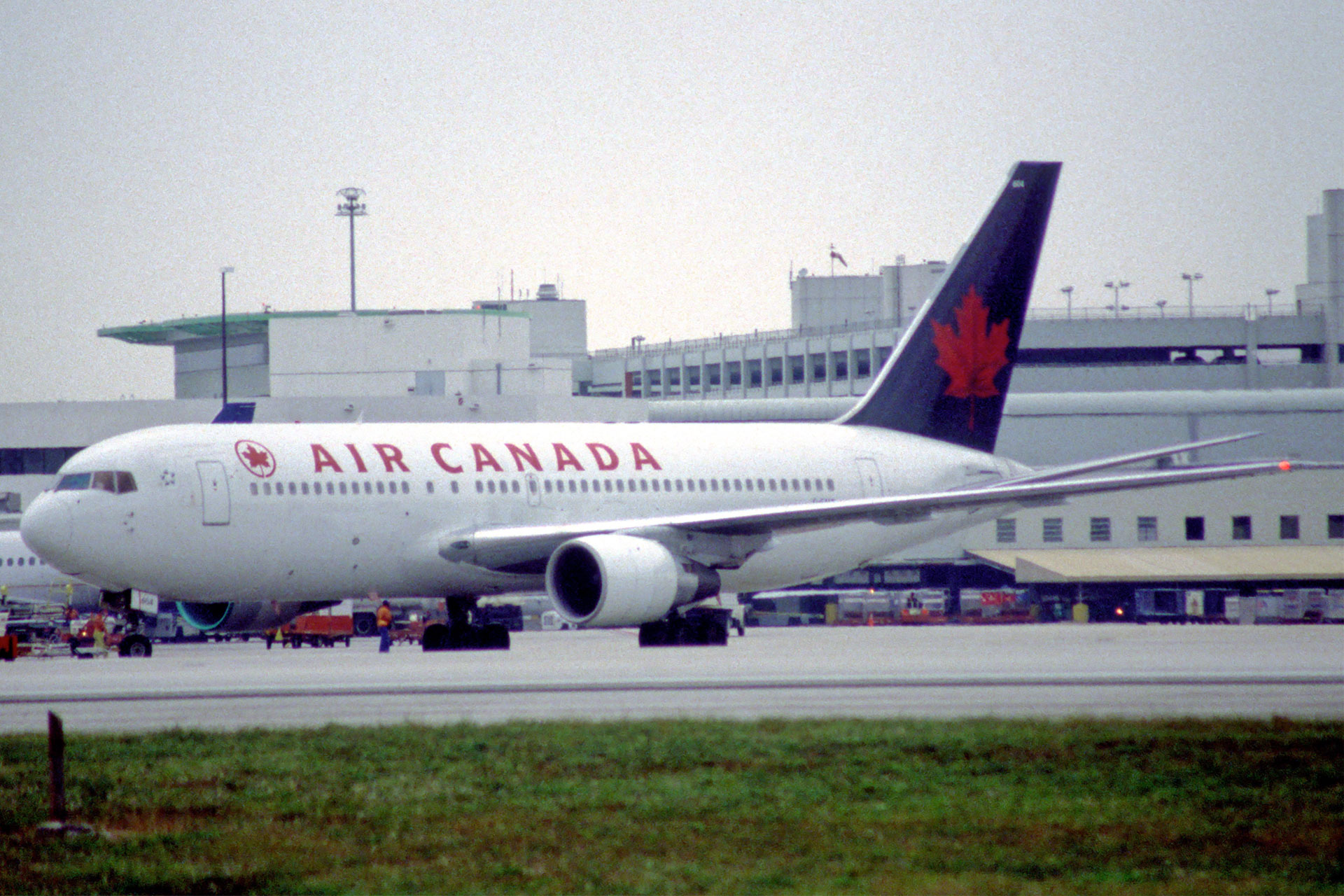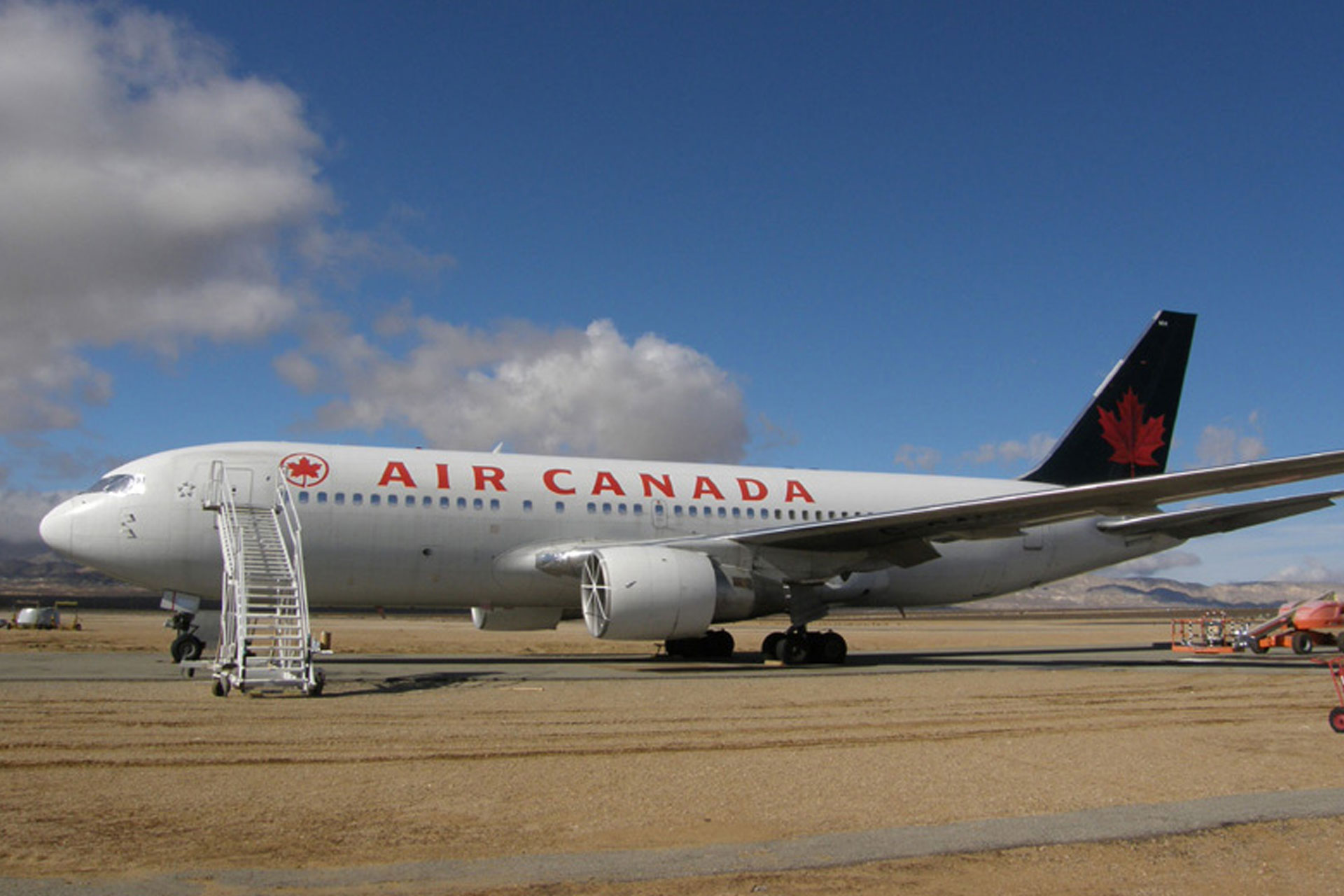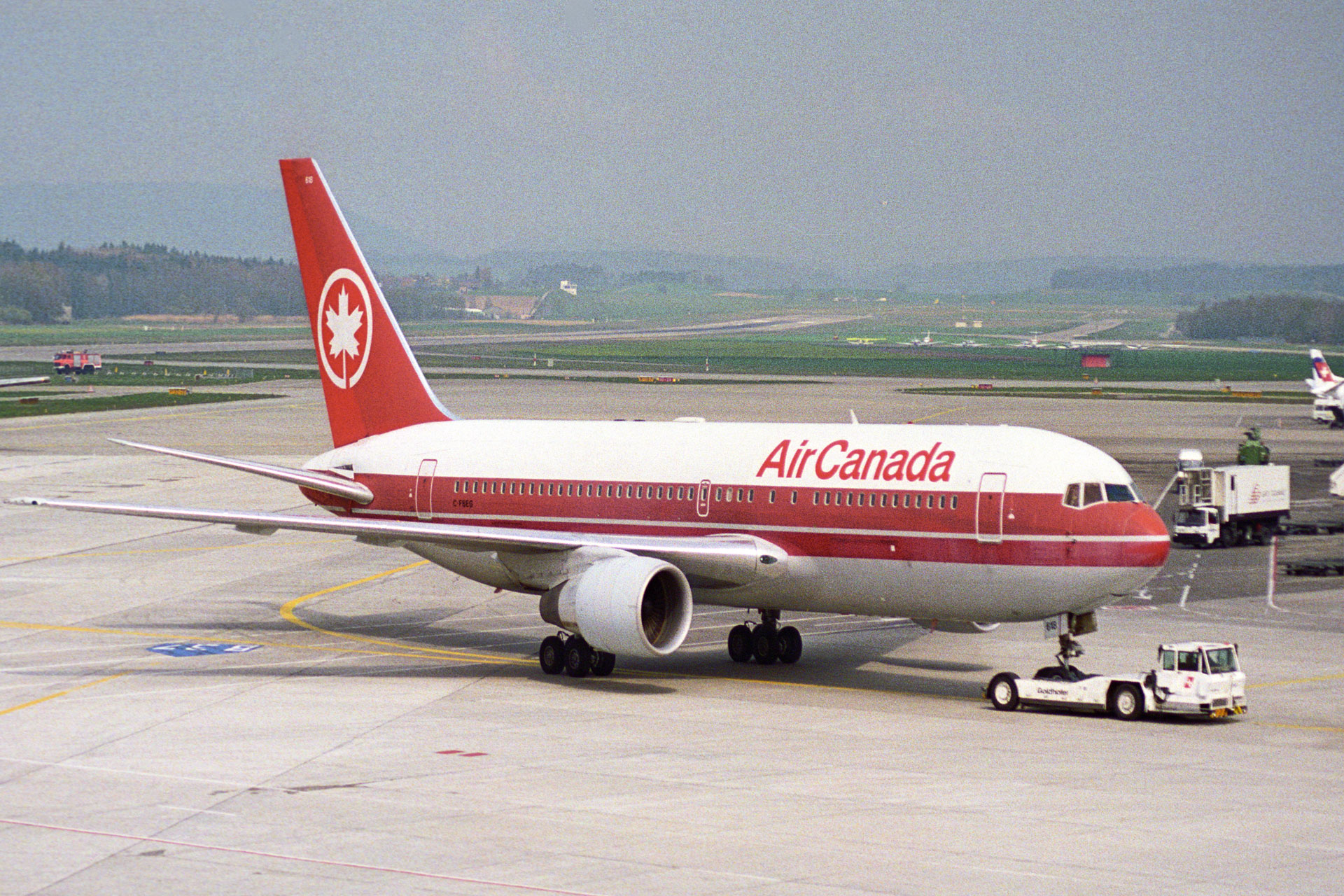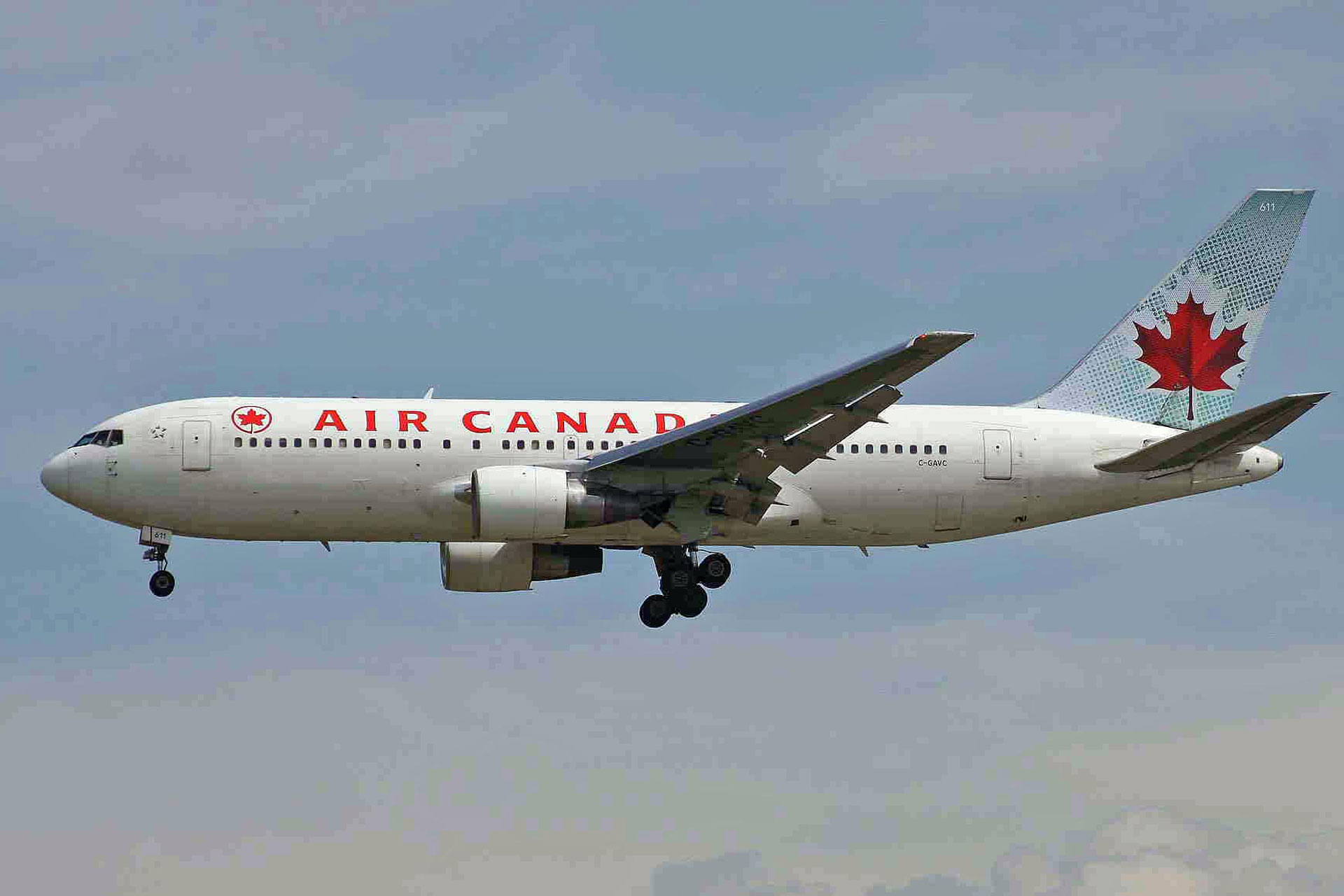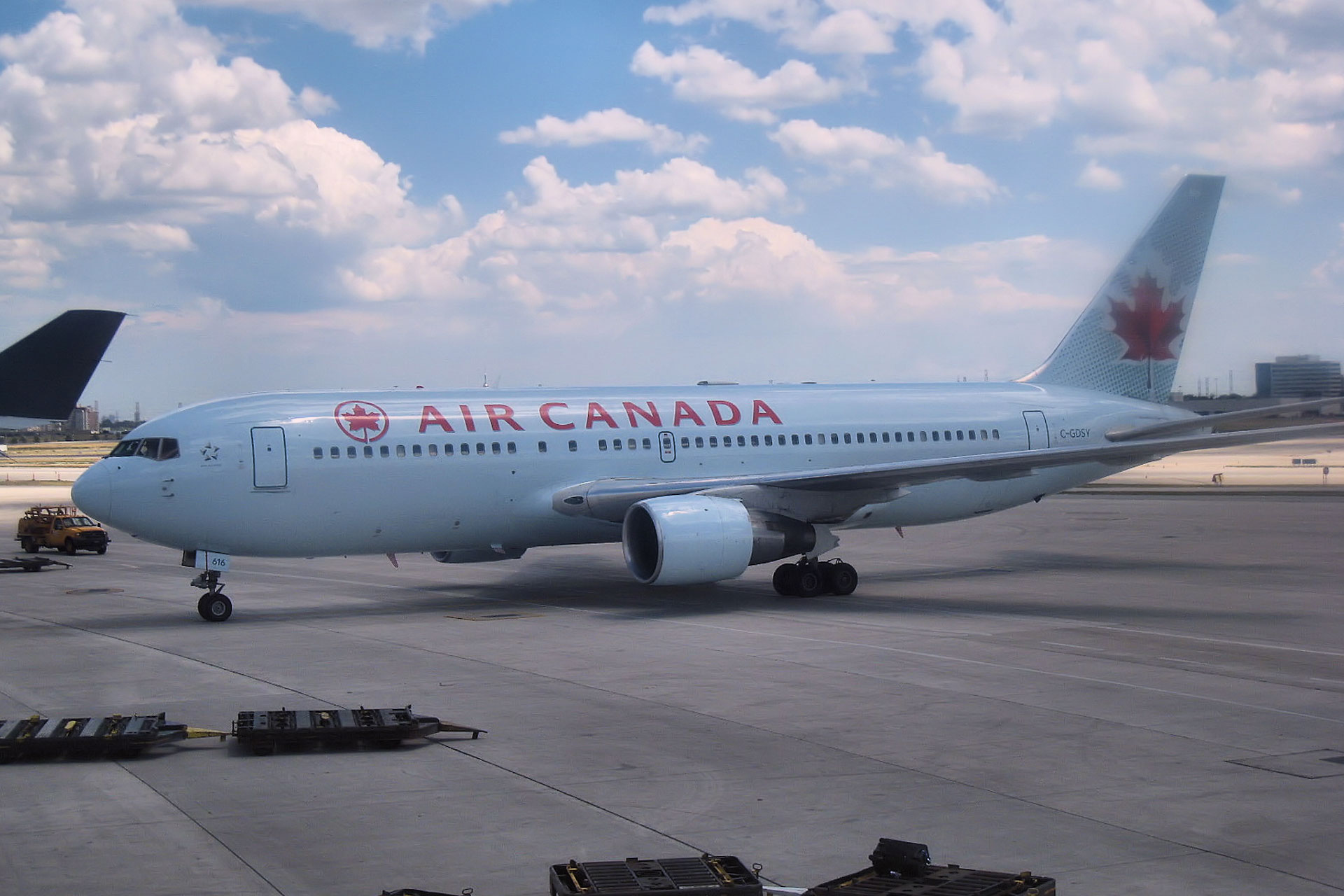The Gimli Glider
The first Boeing 767 was put into service in 1982. To mark the 40th anniversary of this event, Herpa launched a small special series of the American manufacturer's first twin-engine wide-body aircraft at the end of 2022. The 767 revolutionized aviation at the time, above all with its digital two-man cockpit. Thanks to its high degree of automation, the flight engineer in the traditional three-man cockpit could be dispensed with. Their tasks, which included calculating the required fuel supply, were, however, in part taken over by pilots from then on. In regard to this change, a fateful accident occurred in 1983 involving Air Canada's fourth Boeing 767-200. As a result of an error in the calculation of the fuel quantity, the 132-ton jet with the registration C-GAUN involuntarily became an unlikely glider in a dramatic emergency landing necessitated by total engine failure.
On March 30, 1983, Air Canada took delivery of its fourth of a total of ten Boeing 767-233s ordered, intended for medium-haul operations. Four months later, C-GAUN was due to take off on flight AC143 on route number 47 from Montréal via Ottawa to Edmonton. On the morning of July 23, 1983, nobody could have guessed that this flight would go down in aviation history and even become the subject of a dramatic feature film. Things seemed absolutely fine as the plane with 61 passengers and eight crew members stood ready for take-off at its Montréal-Dorval Airport gate. However, there was one problem: the 767's Fuel Quantity Information System (FQIS) had failed.
During the pre-flight checks, the pilots were informed by a ground crew member that all three fuel gauges were inoperable. The aircraft should not actually have been allowed to take off. But the Minimum Equipment List (MEL) for this brand-new type of aircraft, which had only been in service for a few months, was still thin on the ground and did not provide any clear instructions for this eventuality. So, Cpt. Bob Pearson, an experienced pilot, at least on other types, finally decided to fly on the condition that sufficient fuel was taken on board and that a manual check of the tank status be carried out during the stopover in Ottawa.
Error in the calculation of the fuel quantity
A fuel requirement of 22,300 kilograms was calculated for the four-hour flight to Edmonton, with one liter of kerosene weighing 0.803 kilograms. There should still have been 7,682 liters in the tanks from the previous flight from Edmonton, which corresponded to a weight of 6,169 kilograms. Subtracting this value from the required 22,300 kilograms of fuel resulted in a kerosene requirement of 16,131 kilograms. Converted to metric by a factor of 0.803, the result was 20,088 liters. However, the metric system had only recently been introduced in Canada and the brand-new Boeing 767-232 was the first aircraft in the country for which the units in the manuals were already given in kilograms and not in pounds and gallons as with all the other jets. Unfortunately, the pilots were still converting fuel quantity according to the old system, using a factor of 1.77, which resulted in a completely incorrect calculation. Instead of the 20,088 liters actually required, only 4,916 liters of kerosene were filled into the tanks of the Boeing 767, resulting in a total fuel quantity of 22,300 pounds or 10,000 kilograms - less than half of the 22,300 kilograms required for the flight to Edmonton. Despite checking the calculations several times, neither the ground crew nor the pilots noticed this error. Captain Pearson entered the value 22,300 into his flight management system, which calculated in kilograms and thus indicated a sufficient amount of fuel, although there was not even half the required amount in the tanks.
Air Canada's 767-233s replaced the oversized Lockheed Tristar on routes within Canada and to the USA. © Ted Quakenbush_CC
Take-off with fateful consequences
On July 23, 1983, with 61 passengers on board, the Boeing 767 taxied to the runway with its tanks less than half full and shortly thereafter climbed to its cruising altitude of 41,000 feet, which few planes could reach at the time. When the aircraft was halfway over Red Lake in Ontario, an audible and visual warning signal indicated fuel pressure problems in the left engine. Fuel pressure dropped, however the flight management system indicated sufficient fuel in the tanks. Pearson therefore assumed that the pump in the left engine was defective and switched it off. This went well for a few minutes, but then the pump for the right engine also stopped working and a few moments later both engines stopped.
Unnoticed, less than half of the calculated quantity was actually in the tanks, and the left-hand fuel pump had promptly reported problems after half the distance. The pressure dropped, but as the tank was above the engine, the pump was simply switched off. This went well for a few minutes, but then the right-hand pump also stopped working and a few moments later both engines stopped. 75 miles from Winnipeg, the Boeing 767-233 had become a glider. Since the engines of an airplane drive the generators for the power supply, the failure of both engines also interrupted power supply to the screens in the cockpit and the pilots were left in the dark without functioning instruments. The hydraulic supply also broke down, making the large 767 jetliner virtually uncontrollable.
Gimli military base as a lifeline
Captain Robert “Bob” Pearson and F/O Maurice Quintal only had a few moments to make any effective decisions. The nearest airport for an emergency landing would have been Winnipeg, but it quickly became clear that it would be too far way at 75 miles, given their loss of 1,500 meters of altitude over 10 miles. St this point, Pearson drew on his experience as an experienced glider pilot. The weather and, above all, the visibility were good, and F/O Maurice Quintal, a former military pilot, intimately knew the former base of Gimli, only twelve miles away, where the co-pilot had been stationed as a military pilot years before.
What he didn't know, however, was that Gimli was now a public airfield and that on this particular day a large family festival was being held by the local motor sport club. The runway was full of all kinds of vehicles and there were metal guard rails in the middle. But there was nothing to do: landing at the old air base was the only remaining option. It quickly came into view, but just as quickly the pilots realized that the 767 was far too high for a safe landing. So, they decided to do what a glider pilot always does in such situations, namely side-glide, or “slipping”. This involves turning an aircraft crosswise into the wind, losing a lot of altitude but remaining controllable. Now the landing gear still had to be extended, which was not easy due to the hydraulics being almost inoperable, but this was at least partially successful.
It was sensational and ultimately saved the captain's job and the passengers' lives. Neither before nor since has it ever been possible to land an unpowered jetliner more or less undamaged.
Photo: FAA Washington, USA
Dramatic landing
When slipping, it is important to align the aircraft with the runway literally at the last second, which was an enormous flying challenge under the given circumstances. But it worked. The 767 touched down on the runway and Pearson slammed on the brakes, causing several tires to blow out due to ABS system failure. The nose landing gear buckled and the 767 skidded across the runway with sparks flying. In a panic, the many visitors in their racing cars, vans, baby carriages, and tents managed to get out of the way of the incoming jet. The plane finally came to a halt just a few meters from the event area. Fortunately, the fact that the plane had landed on its nose significantly shortened the braking distance. If the nose wheel had been intact, the plane would have overshot the end of the runway and the landing maneuver would have resulted in even more drama.
Shortly before the emergency landing of the 767, the runway was still full of little racing cars. The children were able to escape to safety just in time.
Photo: FAA, Washington, USA
The towering rear end and the steeply sloping emergency slides led to
a number of minor injuries, mainly abrasions and bruises.
Photo: FAA, Washington, USA
Consequences despite flying masterclass
The dramatic flight of the wide-bodied jet ended without any serious injuries to passengers or crew. Although the high level of professionalism of the pilots was praised, the airline was criticized for its shortcomings, and in particular for the poor training of its pilots and ground staff in handling the metric system and calculating weights and fuel quantities. Captain Pearson was suspended from service for six months, but was subsequently reinstated as captain at his airline for many years. Many Air Canada pilots later attempted to recreate the flight of the Gimli Glider on an airline simulator in Vancouver; all failed and crashed. Pearson's achievement remains unmatched to this day.
Two days after the spectacular emergency landing, the 767 was provisionally repaired and returned to Winnipeg to great media interest. The Gimli Glider returned to normal scheduled service and was retired after 25 years at the beginning of 2008, being flown from Montreal to Mojave Desert Airport, where it was finally mothballed. On board were Captain Bob Pearson and Maurice Quintal, who had been promoted to captain himself in the meantime - this time as passengers on Air Canada 143. Today, there is a small museum in Gimli dedicated to flight AC143. Detailed accident reports of the causes, which are only roughly outlined here, can be found on the Internet under “Air Canada Flight 143”.
The “Gimli Glider” remained in service for many years.
Here in 1998 in a modernized livery in Miami.
Photo: AeroIcarus_CC
In 2008, Air Canada retired its most famous aircraft
and parked it in the dry Mojave Desert in
Nevada for the time being.
Photo: Akradetzki_CC
Air Canada has now retired almost all of its 55 Boeing 767-200 and -300 aircraft; a long era of these outstanding twinjets will come to an end in 2025 after well over 40 years at Air Canada. Their successors at the moment are 39 Boeing 787s of the -8 and -9 series. Nevertheless, the 767 still plays an active role at Boeing. Over 1,400 of all series have been produced to date, but in addition to further 767-300Fs for FedEx, several orders for military variants are still outstanding.
Text: Fritz Gratenau
Titelphoto: © AeroIcarus_CC
Facts and figures
Type: Boeing 767-200
Operator: Air Canada
Model/Reg.: 767-233 C-GAUN
Year built: 1982
Construction Nr. 22520/47
Category: Medium-haul, wide body jet
Engines: 2 x PW JT9D-700, 214 kN
Capacity: 18 Business / 196 Economy
Range: 7,200Km
Cruising speed: 805Km/h
Production: 128 (767-200)
Period of production: 1982-1987


